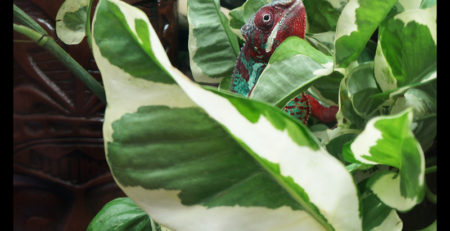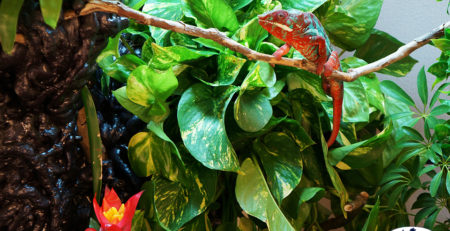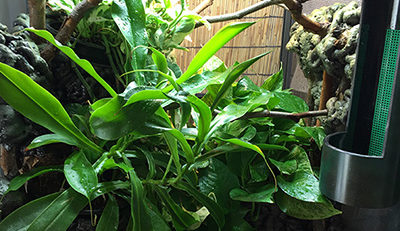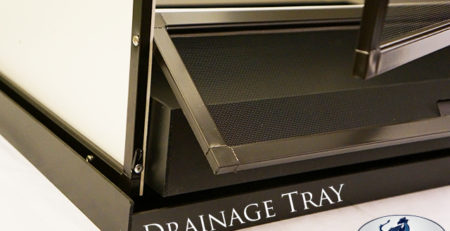Natural Feeders in the Dragon Strand Large Keeper Kit
Introduction:
One of the advantages of purchasing a Dragon Strand cage is that it is rust proof and the screen cages can be used outdoors. The cages are designed to keep both chameleons and their feeders in the cage, but if you are using the cages outdoors it is a shame to keep naturally occurring diurnal insects from making their way into your cage and providing a nutritious meal. In this application note I describe a cage modification that will modify a Dragon Strand screen “Keeper” series cage to allow flying insects in the cage. We will replace the top face panel of a Dragon Strand Large Keeper Kit cage with a ½” square hardware mesh.
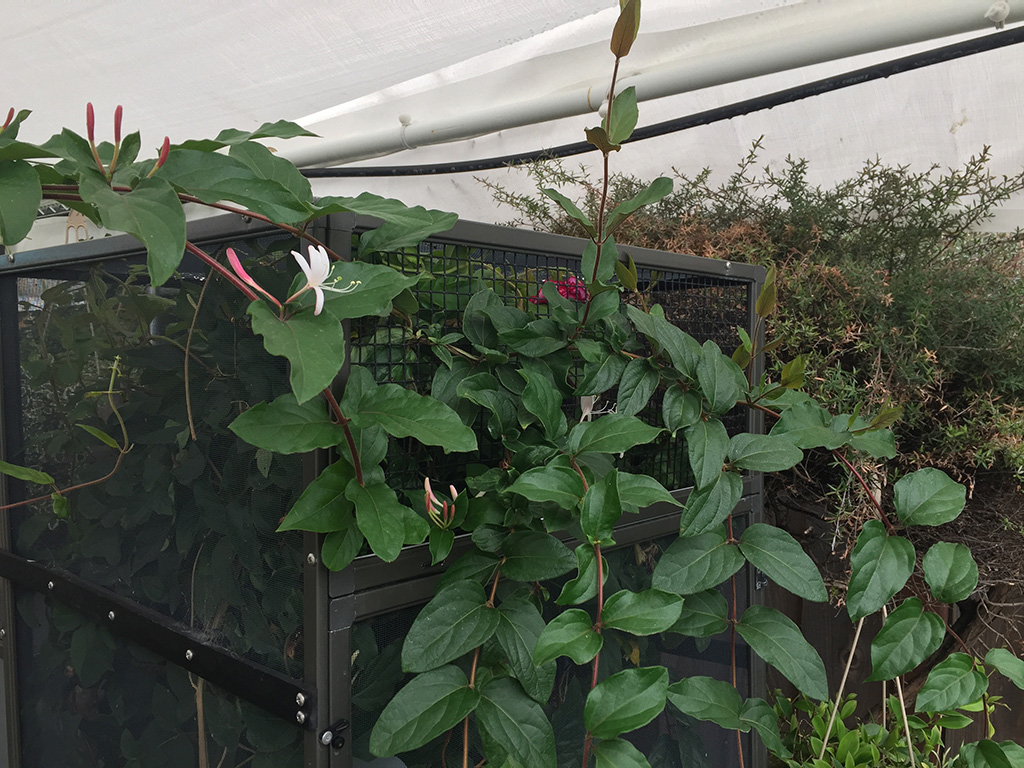
Before we get started….
First of all, when using a cage for in an outdoor application there are many things necessary to do it safely. Only use screen cages as solid side cages will trap heat and can kill your chameleon. If you are considering putting your chameleon outdoors and would like information on how to do it safely please listen to this episode of the Chameleon Breeder Podcast.
Second, providing an entry for flies, bees, praying mantises, and butterflies does no good unless they have a reason to use it. Therefore, choose your cage plants to be varieties the produce flowers or make sure there is some bait to encourage them to come.
Third, just remember your cage is no longer feeder proof! Do not use this cage indoors unless you make sure your feeders are confined to a feeding dish. Along the same lines, for you breeders of livebearer,
Summary: To provide inside access to flying insects we will remove the screen on the Top Face Panel and replace it with 1/2” PVC coated hardware mesh.
Tools & Materials required:
Top Face Panel from your screen cage
A piece of ½” PVC coated Hardware Cloth (ask for this at your local home improvement store)
Eight 4” black zip ties
Drill with 1/8” bit
Wire Snips
Optional: clamps to hold hardware cloth in place

Instructions:
1) Unscrew the Top Face Plate from the Large Keeper Cage. Place the screws in a bowl so they do not get lost
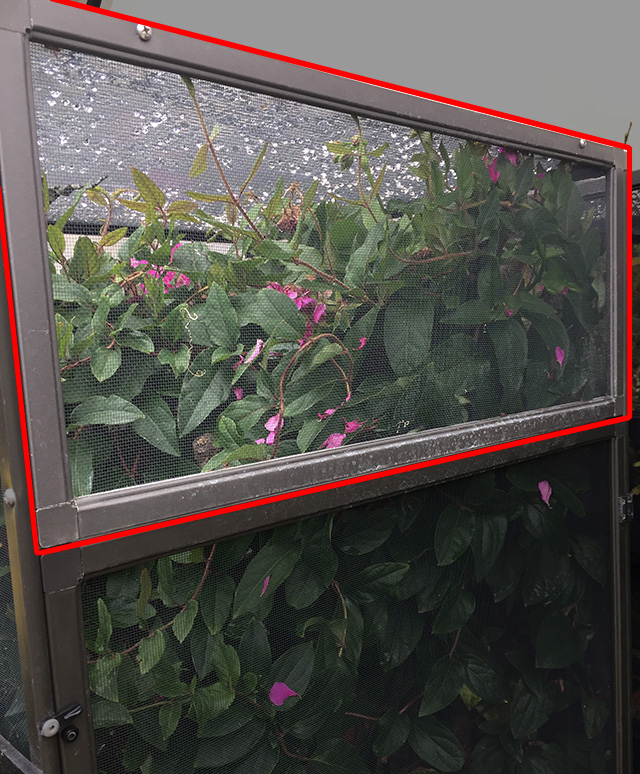
2) Remove the screen by finding the end of the spline holding it in and pulling it up.


3) Cut a length of Hardware cloth to match the frame. It needs to overlap the entire width and height of the screen panel frame. It is not necessary to have overlap to the end of the strip of white PVC. It will not hurt, but we will only use the frame portion that the PVC is attached.
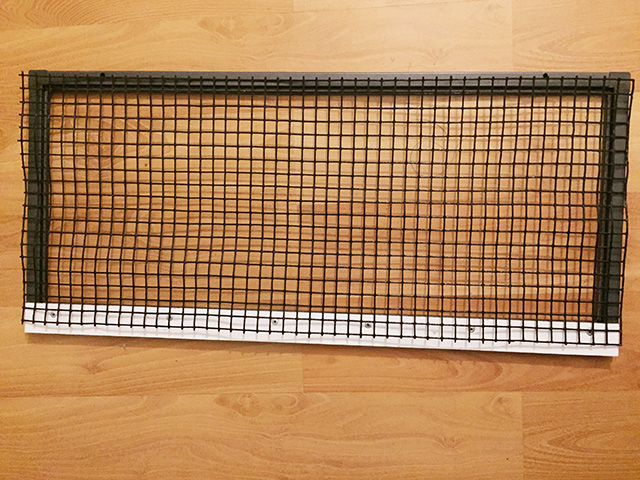
4) Drill holes in the frame to be able to insert zip ties to hold the hardware cloth in place.
Notes for the drilling process:
- Select a drill bit that is the width of the zip ties you are using. I am using 4” black zip ties and a 1/8” drill bit is the perfect size.
- I use clamps to hold the hardware cloth in place while I drill holes. You may do this by hand instead. It is just a littlemore work to get it right.
- Drill holes so the zip tie will hold a ‘square” of the hardware cloth tightly.
- On the bottom edge with the PVC strip, make sure you drill into the frame. Although the PVC alone will be string enough, we need the other side to be flush for the door to rest against.
- Remove burrs from the holes drilled in the aluminum framing.
- Do not drill holes on the top frame piece. This piece will be screwed into the top panel of the cage. You do not want the zip tie to block this and create extra space between the frame pieces. Screwing the frame into the top panel will sandwich the entire frame length and no further attachment of the hardware cloth is necessary.

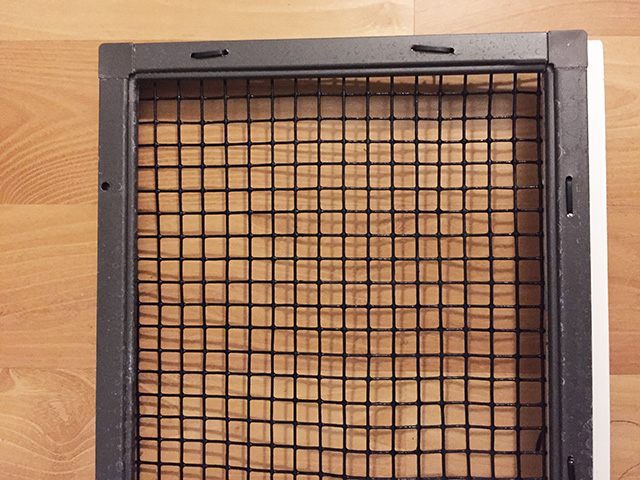
5) Install zip ties and tighten as much as possible

6) Use wire drips to clip off zip tie tails
7) Install Top Face Panel back on cage. Screw tightly, but beware of stripping the screw hole by tightening too much. (If you do strip a hole you can create a new hole by using a drill bit smaller than the screw or just twist the screw through the aluminum. It will self-tap)
Conclusion: this modification will not only allow natural insects entry to the cage, but flowering plants and vines an exit point to grow out of, break up the unnatural lines of your cage and create a more beautiful environment for both you and your chameleon.




